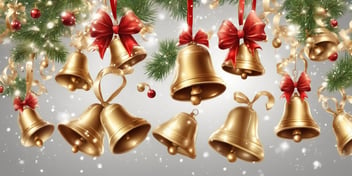- Blog
- Merry Christmas
- Delve into the Meaning of Merry Christmas Nativity Scenes

Ah, the beloved Christmas nativity scenes - those enchanting little dioramas that magically appear in living rooms and town squares every holiday season. As we gather around these meticulously crafted scenes depicting baby Jesus, Mary, Joseph, and the rest of the biblical cast, we can't help but be captivated by their serene beauty.
But what is it about these nativity scenes that makes them such an integral part of the Christmas tradition? Join us as we delve into the heartwarming symbolism andprofound meaning behind these miniature masterpieces, and uncover the true essence of a merry Christmas.
Brief history of nativity scenes
Origins in Christian tradition
Nativity scenes have deep roots in Christian tradition, serving as visual representations of the birth of Jesus. These scenes typically include figures such as Mary, Joseph, the baby Jesus, shepherds, angels, and the wise men. By depicting this significant moment in religious history, nativity scenes allow believers to reflect on the humble beginnings of Jesus and the hope he brought to the world. They serve as a reminder of the central message of Christmas, highlighting the importance of faith, love, and the miracle of Christ's birth. Today, nativity scenes can be found in churches, homes, and public displays during the holiday season.
Development of nativity scenes
The development of nativity scenes can be traced back to the Christian tradition. These scenes began as simple depictions of the birth of Jesus, featuring figures like Mary, Joseph, and the baby Jesus. Over time, nativity scenes evolved, incorporating more intricate details and additional characters such as angels, shepherds, and the wise men. In the Middle Ages, nativity scenes became increasingly popular and were even performed as live reenactments in churches and town squares.
Today, nativity scenes continue to be an important part of Christmas celebrations, with various interpretations and artistic styles showcased in homes, churches, and public displays worldwide.
Popularity during the Middle Ages
- During the Middle Ages, nativity scenes gained immense popularity as a way to visually depict the birth of Jesus.
- These scenes were commonly depicted in religious artworks, illuminations, and church decorations.
- The use of nativity scenes helped to communicate the significance of the Christmas story to illiterate individuals.
- As a result, nativity scenes became a powerful tool for spreading the message of Christmas and reinforcing religious teachings.
- The popularity of nativity scenes during this time led to their widespread adoption and continued significance in contemporary Christmas traditions.
Significance of nativity scenes
Depicting the birth of Jesus
Depicting the birth of Jesus, Merry Christmas nativity scenes serve as visual representations of the biblical event. These scenes typically feature a manger, Mary, Joseph, the baby Jesus, shepherds, angels, and the wise men. By showcasing this significant moment in Christian history, nativity scenes provide a tangible reminder of the true meaning of Christmas. They help believers remember the humble beginnings of Jesus and the faith and hope he represents.
Whether displayed in churches or homes, nativity scenes encourage reflection and worship during the holiday season.
Symbolizing hope and faith
Nativity scenes symbolize hope and faith during the Merry Christmas season. They serve as a reminder of the belief in the miraculous birth of Jesus, bringing hope and inspiration to Christians worldwide. By depicting the humble circumstances of Jesus' birth, nativity scenes emphasize the power of faith in times of adversity. They encourage individuals to find strength and reassurance in their own faith journeys.
Additionally, nativity scenes evoke a sense of unity and joy, fostering a collective hope for peace and goodwill. The symbolism of hope and faith in nativity scenes encourages people to cultivate these values in their own lives and spread them to others during the Christmas season.
Reminding of the true meaning of Christmas
Amidst the hustle and commercialization of the holiday season, Merry Christmas nativity scenes serve as a powerful reminder of the true essence of Christmas. They rekindle our connection to the birth of Jesus and the biblical narrative, helping us refocus on faith, love, and compassion. Nativity scenes encourage us to embrace the spirit of giving, kindness, and togetherness that lies at the heart of Christmas. They inspire us to prioritize family, community, and acts of goodwill, fostering a sense of unity and joy. By prominently displaying nativity scenes, individuals and communities infuse the festive season with deeper meaning and purpose, creating a space for reflection and recommitment to the core values of Christmas.
Evolution of nativity scenes
Traditional nativity scenes
Traditional nativity scenes are a cherished part of the Merry Christmas celebration. These scenes typically depict the birth of Jesus, with figures representing the Holy Family, shepherds, angels, and the Three Wise Men. They are often crafted from materials like wood or porcelain and displayed as tabletop or floor decorations. Traditional nativity scenes convey the biblical story and serve as a visual reminder of the significance of Christmas.
Many families incorporate nativity scenes into their holiday traditions, placing them under the Christmas tree or on mantelpieces. These timeless representations allow people to connect with the spiritual aspect of the holiday season.
Modern variations and interpretations
Modern variations and interpretations of Merry Christmas nativity scenes offer a fresh perspective on this timeless tradition. Many artists and designers now incorporate innovative materials, such as recycled materials or unconventional textures, to create unique nativity scene displays.
Additionally, contemporary interpretations may deviate from the traditional representation, introducing diverse cultural elements or incorporating abstract symbolism. These modern versions of nativity scenes encourage individuals to connect with the story of Christmas in a more personal and relevant way.
For example, some nativity scenes focus on themes of social justice or environmental sustainability, prompting reflection on the broader message of compassion and care during the holiday season.
Merry Christmas nativity scene displays
Christmas nativity scene decorations
Christmas nativity scene decorations add a beautiful touch to the festive ambiance. They help create a warm and inviting atmosphere, reminding us of the joyous occasion. Many people choose to incorporate nativity scene decorations into their holiday decor because they symbolize the true meaning of Christmas - the birth of Jesus. These decorations often include figurines of Mary, Joseph, Baby Jesus, and the Three Wise Men, placed alongside farm animals and angels.
Some popular decorations include miniature nativity sets for tabletops, ceramic or wooden figurines to be displayed on mantels or shelves, and larger outdoor displays for yards or gardens. Adding these decorations to your home during the holiday season can bring a sense of spiritual significance and a reminder of the reason for the festive celebration.
Public nativity scene installations
Public nativity scene installations during the Merry Christmas season have become a cherished tradition in many communities. These displays, often set up in parks, town squares, or outside churches, create a sense of togetherness and reinforce the religious significance of Christmas. They serve as a visual reminder of the nativity story and evoke feelings of joy and unity.
Public installations also provide an opportunity for individuals of all backgrounds to appreciate and learn about the nativity scene's symbolism. Whether it's a life-sized display with intricate details or a simple depiction, public nativity scenes bring communities together and foster a spirit of celebration during the holiday season.
Nativity scenes in churches and homes
Nativity scenes hold a significant place in both churches and homes during the Merry Christmas season. Churches often feature grand nativity displays, beautifully depicting the birth of Jesus. These scenes attract visitors seeking a sense of spirituality and reflection. In homes, nativity scenes serve as visual reminders of the true meaning of Christmas and can become cherished family traditions.
Many families incorporate personalized elements into their nativity scenes, such as including homemade decorations or involving children in the setup process. Whether in a place of worship or within the warmth of home, Merry Christmas nativity scenes inspire devotion and help individuals connect with the story of Christ's birth.
Over to you
For many people, Merry Christmas nativity scenes hold deep religious and cultural significance during the holiday season. These scenes, depicting the birth of Jesus Christ in a humble stable, symbolize the sacred story of Christmas. Nativity scenes often feature various characters such as Mary, Joseph, the shepherds, the three wise men, and angels, each representing an important aspect of the story.
Building or displaying a nativity scene is a cherished tradition for many families, allowing them to celebrate and reflect on the true meaning of Christmas. These scenes serve as a reminder of the humble beginnings of Jesus and the message of peace, hope, and love that Christmas brings.
Read On

What is the history of the Christmas nativity scene or creche?
Ah, the Christmas season—a time of twinkling lights, cozy carols, and the beloved nativity scene...

Discover the True Meaning of Christmas Day Nativity
As the holiday season approaches, the air becomes filled with the magical anticipation of Christmas...

Celebrating the True Meaning of Christmas: Jesus-Inspired Decorations for Your Home
'Tis the season to be merry and gather 'round the twinkling lights, but amidst all the joy and...